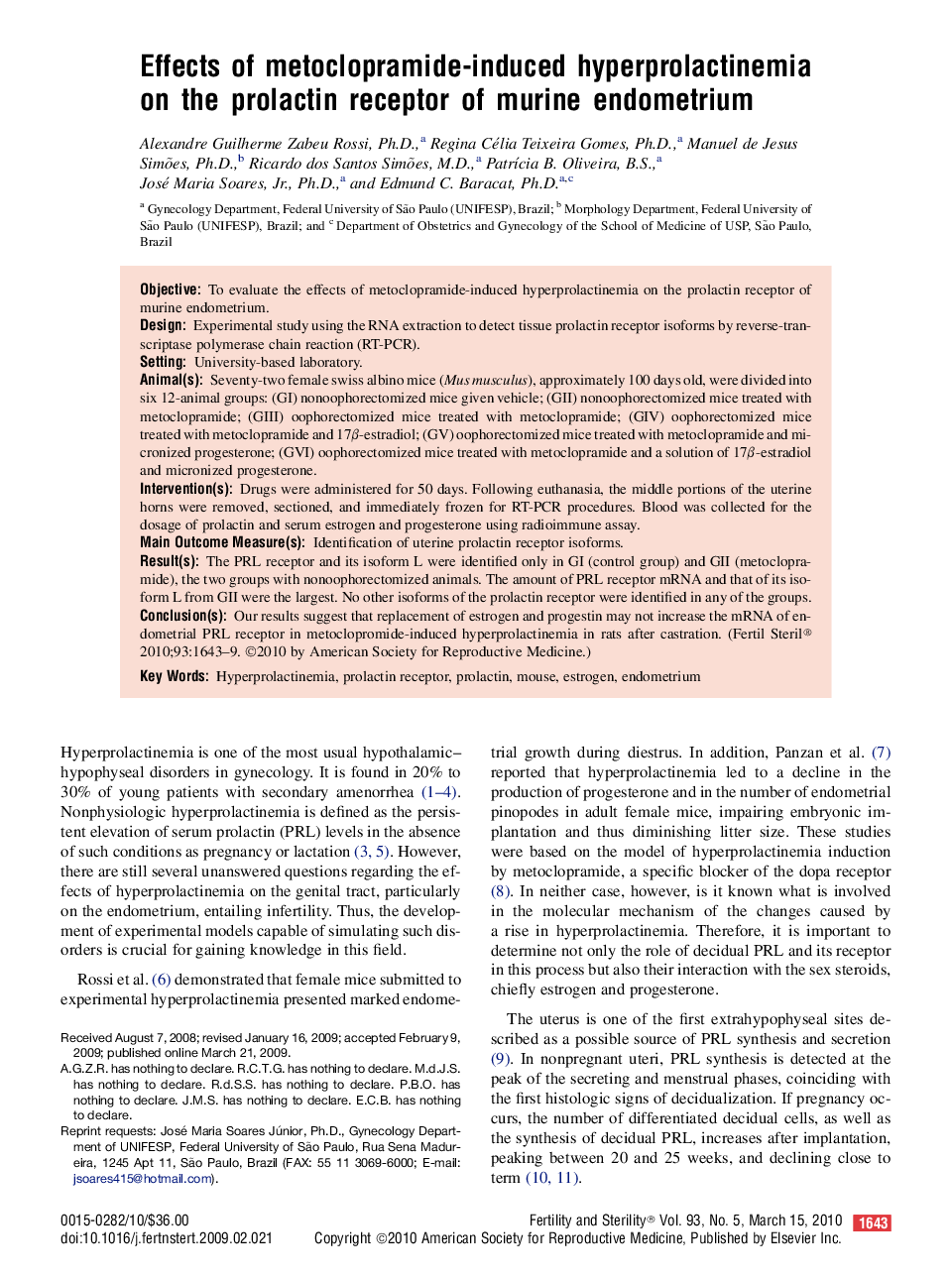| Article ID | Journal | Published Year | Pages | File Type |
|---|---|---|---|---|
| 3938245 | Fertility and Sterility | 2010 | 7 Pages |
ObjectiveTo evaluate the effects of metoclopramide-induced hyperprolactinemia on the prolactin receptor of murine endometrium.DesignExperimental study using the RNA extraction to detect tissue prolactin receptor isoforms by reverse-transcriptase polymerase chain reaction (RT-PCR).SettingUniversity-based laboratory.Animal(s)Seventy-two female swiss albino mice (Mus musculus), approximately 100 days old, were divided into six 12-animal groups: (GI) nonoophorectomized mice given vehicle; (GII) nonoophorectomized mice treated with metoclopramide; (GIII) oophorectomized mice treated with metoclopramide; (GIV) oophorectomized mice treated with metoclopramide and 17β-estradiol; (GV) oophorectomized mice treated with metoclopramide and micronized progesterone; (GVI) oophorectomized mice treated with metoclopramide and a solution of 17β-estradiol and micronized progesterone.Intervention(s)Drugs were administered for 50 days. Following euthanasia, the middle portions of the uterine horns were removed, sectioned, and immediately frozen for RT-PCR procedures. Blood was collected for the dosage of prolactin and serum estrogen and progesterone using radioimmune assay.Main Outcome Measure(s)Identification of uterine prolactin receptor isoforms.Result(s)The PRL receptor and its isoform L were identified only in GI (control group) and GII (metoclopramide), the two groups with nonoophorectomized animals. The amount of PRL receptor mRNA and that of its isoform L from GII were the largest. No other isoforms of the prolactin receptor were identified in any of the groups.Conclusion(s)Our results suggest that replacement of estrogen and progestin may not increase the mRNA of endometrial PRL receptor in metoclopromide-induced hyperprolactinemia in rats after castration.
